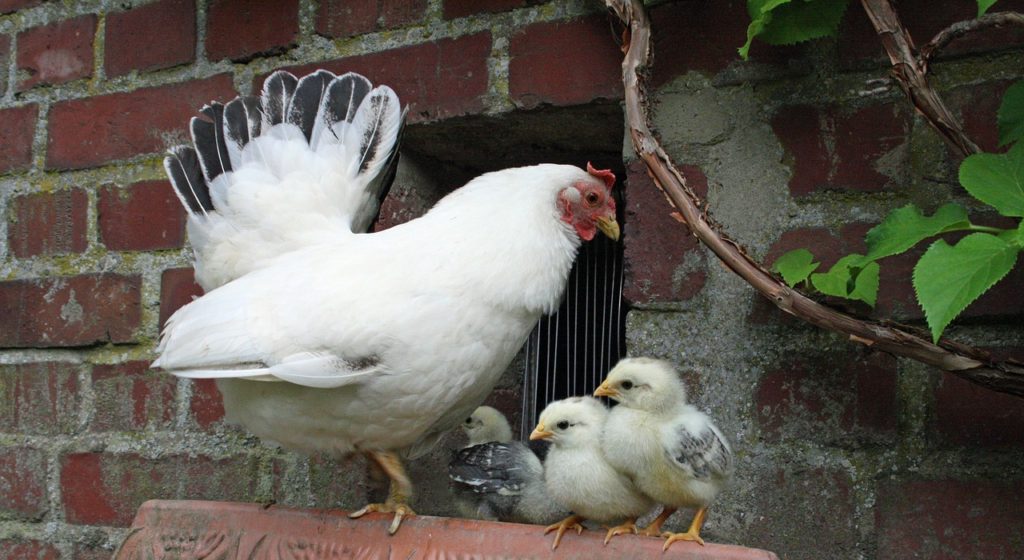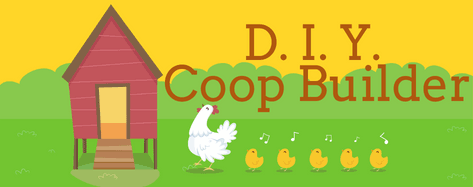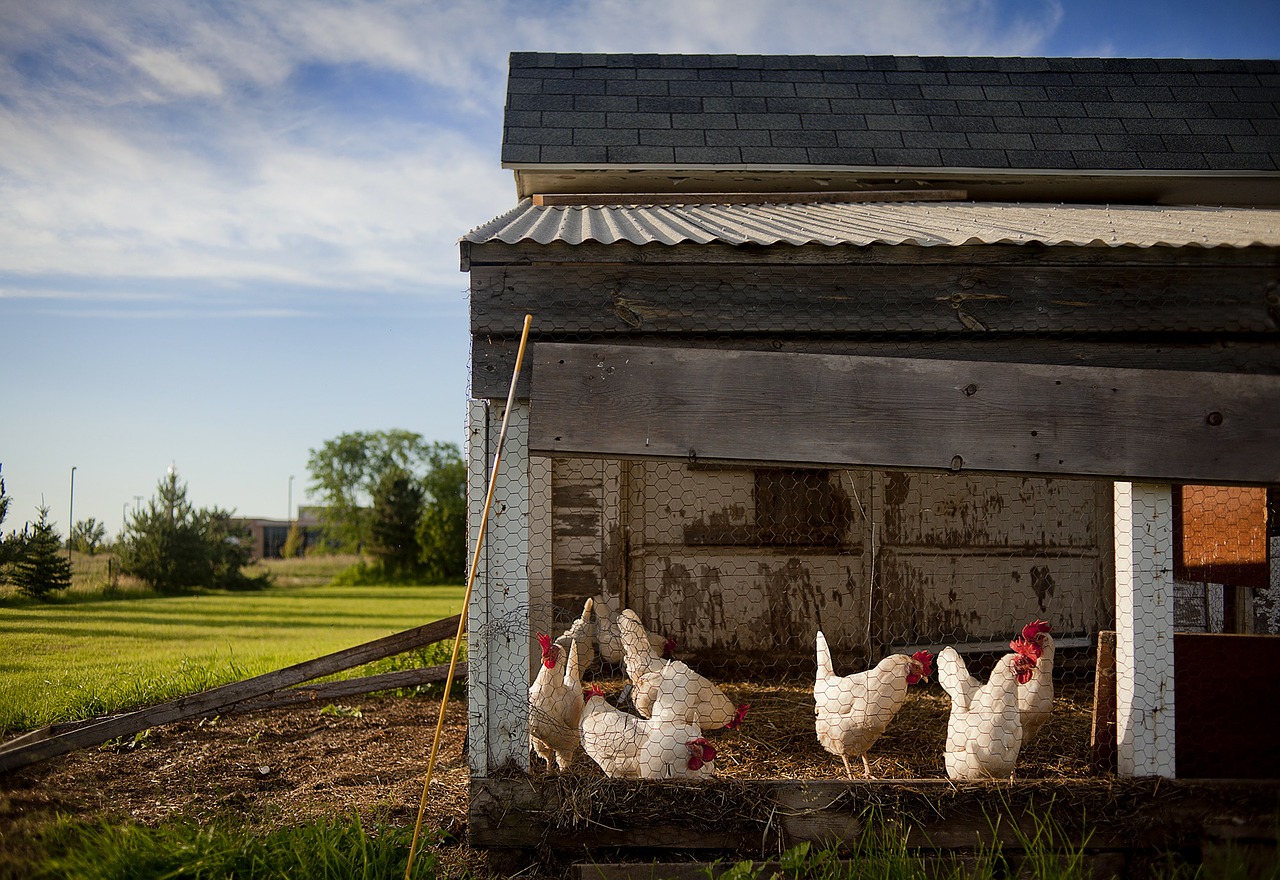While we can all appreciate the ease of walking into a shop and ordering a pre-made coop to be delivered, there are multiple benefits of making a DIY chicken coop, even if you have the money. It is cheaper, it is adaptable, and it is very easy. Everyone who has built something with their own two hands knows that building anything is not difficult if you have someone to show you the ropes, and this is exactly what we plan to do.
Hen houses also known as chicken coops that use chicken wire and regular wood. They are basically small houses where chickens are kept protected and safe. In any good chicken coop should be a number of nest boxes specifically made for laying eggs as well as perching areas for the chickens to roost at night.
The majority of chicken coops are designed and built with an indoor area, and an outdoor region created so that the birds can eat from the feeder and are free to walk around. The basic chicken coop should be built so as to avoid overheating and spread of airborne disease. When its daylight, the chickens can be released to venture freely outside but should be brought back to the coop at night when it’s time to roost.
To give your chickens both security and freedom, it is best to make your coop from two parts. One will be indoors and keep your chicks safe and sound. The other will be in the open and it will give them room to run around and take precious vitamin D they need.

Chicken Coop with a Run
As with all birds, it is only natural for your lovely brood to want to roam freely outside instead of being confined in an enclosed space all day.
A chicken run is an enclosed and safe outdoor area that is usually attached to a chicken coop. When considering building a chicken coop with a run, it is important to take the number of birds you plan to train and also their sizes. You might decide to make the chicken coop with run larger than normal if you anticipate getting more birds. Also, it is a great choice to go for chicken coops on the larger side, especially in the colder weather to prevent your birds from becoming stressed and potentially plucking one another’s feathers.
The right coop should also be high enough to accommodate you while standing but small enough to house your birds snugly. Your best bet is a walk-in coop which provides room for your mobility without any hassle trying to get in or out. It also gives the birds breathing space, especially in the warmer months.
Design
The perfect chicken coop with a run is usually made of strong, water-resistant wood, which is fitted to every side with galvanized wires. This type of wood is as easy to work with as PVC or other plastic while being much better in keeping chickens happy and working on egg production. Fenced building keeps your chickens safe and provides them with shelter. The best chicken runs are those that are placed on verdant, grassy landscapes as opposed to those placed on muddy and boggy areas which can increase the risk of disease or illness.
There are many benefits associated with constructing your own chicken coop. One advantage is knowing exactly what your hen needs and then designing it perfectly. Also, you can save a decent amount of cash and have a fun ride while at it. Lastly, should the need for modifications pop up, you have the liberty of tweaking things—something that isn’t always so easy with manufactured coops.
Great Ideas for Chicken Coop with Runs
If you have been dreaming of building your chicken coop with a run, you are in the right place. Do not worry about anything; we have everything covered. With these ideas, you will become not only an avid keeper of incredibly healthy birds but also a proud coop architect!
Let’s do this!
Essentials
- Enough space for the birds
- Ventilation
- Free from drafts
- Ease of cleaning and sanitation
- Safety from extreme weather elements
- Predator safe
DIY Standard requirements
These are the basic requirements for different bird sizes:
- Bantams – For bantams, the coop area should measure two square feet for each bird while the run area should measure 4 ft² for each bird
- Standard large chicken – 4 ft² in the coop per bird, 8 ft² in the run per bird
- Extra-large birds: same as standard large birds
Chicken Coop with a Run Using Cedarwood
Cedarwood is a great waterproof type of wood that is also resistant to damage from pests. You can use this wood to create DIY wood chicken roosting poles, wood Nesting Boxes, and to strengthen the roof. For the flooring, you can use California Gold gravel that bears a striking semblance to granite. Diatomaceous earth can be sprinkled alongside the California Gold gravel to serve as a pest-free natural soil.
To ensure you have an environmentally-friendly chicken coop with a decent run, grow plants like sage and rosemary that are edible on the ground cover.

Chicken Coop DIY Plan Ideas
The chicken coop from HGTV has a raised coop fence that can contain up to six birds, a storage area, a vent, a walk-in run, and a place for egg collection. The minimum size per hen should be three square feet. If the birds are not free-range, you should increase the interior volume of the coop to five square feet.
The perch should have a minimum of 10 linear inches for every chicken. Furthermore, the run should measure at least 25 square feet while the nesting bird should measure 1 square foot per nesting chicken.
Tools Required
- Sandpaper
- Paint Brush
- Spirit Level
- Hammer
- Electric Stand Saw
- Screw Driver
- Extension chords
- Measuring Tape and Pencil
Procedures
- Build the Frame
- Build the two sides of your chicken coop
- Join both sides together
- Build a Roof for Your Coop
- Construct and fit the roof trusses
- Fix the ridge rail
- Start Roofing and Framing the Panels
- Cut out the fit rood panel
- Fit the coop frame panels
- Boreholes in the panels
- After building, it is time to put final touches including
- Painting
- Fencing
- Nesting Boxes

